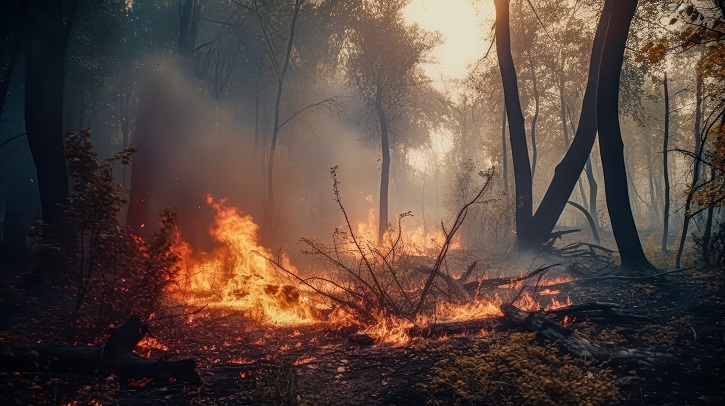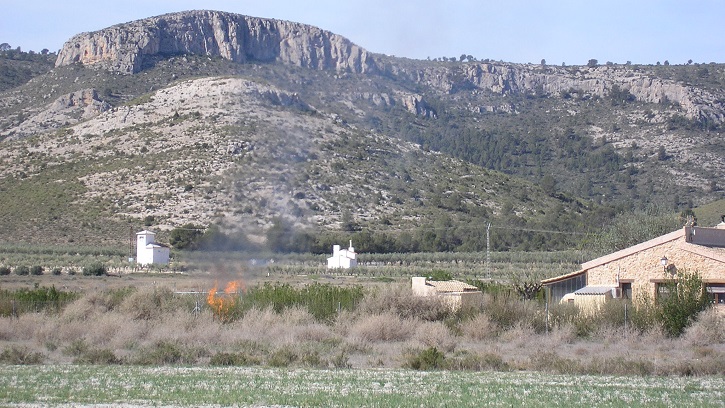Humans already used controlled fires 11,000 years ago to improve productivity

Hunter-gatherer human communities were already carrying out controlled fires 11,000 years ago to open up clearings and grazing areas for wild animals and thus improve productivity. To date, it was thought that this practice did not begin until the Neolithic period, around 9,000 years ago, and that it did not become widespread until the Iron Age, around 3,000 years ago. Now, a study led by the University of Barcelona and published in the journal Catena shows that humans began to transform the landscape through fire earlier than previously thought.

Hunter-gatherer human communities were already carrying out controlled fires 11,000 years ago to open up clearings and grazing areas for wild animals and thus improve productivity. To date, it was thought that this practice did not begin until the Neolithic period, around 9,000 years ago, and that it did not become widespread until the Iron Age, around 3,000 years ago. Now, a study led by the University of Barcelona and published in the journal Catena shows that humans began to transform the landscape through fire earlier than previously thought.
The study, led by the researcher of the UB’s Department of Geography Carlos Sánchez, has been carried out on samples from Laguna de Villena (Alicante). In order to study the fires that occurred 11,000 years ago, the researchers carried out a geochemical study of the sedimentary carbons in the soil and analysed the remains of pollen from that period. Also, they have added information from archaeological artefacts from the period. This multidisciplinary work has allowed them to conclude that "these were intentional fires, most of which did not coincide with periods of drought, but with times of maximum human activity".
About 11,000 years ago, fires in the Villena Lagoon (at the beginning of the Holocene period) were frequent. There was a high availability of fuel due to the expansion of oak and holm oak forests in a period of temperate and humid climate. This climate would have favoured the settlement of hunter-gatherers in this region, as the lagoon environment offered a rich ecosystem for their subsistence activities. In this context, the vegetation landscape was modified using fire by these communities of the Mesolithic culture, the stage prior to the Neolithic.
The study shows how the combination of landscape transformation by Mesolithic populations and progressive aridification after a climatic episode of cooling 8,200 years ago broke the balance of the ecosystem and marked a turning point in the dynamics of the vegetation. The oak and holm oak forests never recovered their dominant role in the landscape, and a new balance was formed, with the dominance of pine forests and vegetation better adapted to an arid climate. Jordi Revelles, postdoctoral researcher at the Catalan Institute of Human Paleoecology and Social Evolution (IPHES), notes: "Despite the frequent consideration of a minor capacity of hunter-gatherer communities in the transformation of the landscape, this work highlights the active role of Mesolithic populations in the southeast of the Iberian Peninsula in the fire regime to favour open spaces in the forests".
Mitigating severe fires
From the Neolithic onwards, the reduced availability of plant fuel due to aridity and agricultural and livestock farming resulted in lower fire intensity. One of the conclusions of the study is that fire management practices based on traditional activities (agriculture, livestock, slash-and-burn deforestation) can help to stop the uncontrolled growth of forests and thus mitigate the severity of fires, as they did 8,000 years ago.
The study provides further data to reconstruct a whole series of environmental changes during the early Holocene and the early-mid Holocene transition (from 9,000 years ago to 5,500 years ago). According to Carlos Sánchez-García, "The sediments indicate that between 9,000 and 8,700 years ago an arid phase interrupted a climatic optimum". The researcher explains that subsequently, until 8,300 years ago, "a humid period was recorded in Villena, with the predominance of a mineralogy more typical of lake areas". The transition to the Middle Holocene, marked by an abrupt climatic episode of cooling 8,200 years ago, caused significant plant and environmental changes. "Aridity increased, as well as the expansion of detrital elements and the precipitation of gypsum crystals in lake sediments. Aridity peaked around 6,000 years ago, coinciding with an increase in detrital elements and erosion precursors", Sánchez-García adds.
This study, which uses archaeological data recently obtained in the framework of the ERC Paleodem project, involves the participation of a large interdisciplinary team. In addition to the aforementioned authors, the palynologists Francesc Burjachs (ICREA-IPHES) and Isabel Expósito (IPHES-BUSCA), the anthracologist Itxaso Euba, the geologist Jordi Ibañez (GEO3BCN-CSIC), the geographer Lothar Schulte (University of Barcelona) and the archaeologist Javier Fernández-López de Pablo (University of Alicante) have also participated.
Multimedia gallery

